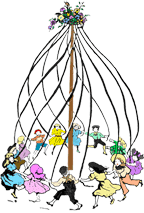Lewiston, 1870
Richmond had been settled in the fall of 1859, Franklin in the spring of 1860, and Clarkston in 1864. There was all the land in the center of the Valley west of Richmond and Franklin, which had not been settled. All the most desirable locations on the streams in Richmond and in the other settlements of the Valley, had been taken. More new settlers continued to arrive in Cache Valley. Naturally they were forced to take lands in the center of the Valley and get their irrigation water wherever they could. This was difficult to do.
Such were the conditions with the early settlement of Lewiston. This area had been used by the people of Richmond as a herding ground. It was covered with buffalo and blue grass. It had also been used in the past by the Indians as a place for their pow-wows, where they had horse races and other games. As there were no trees or vegetation the sand drifted considerably.
In July 1870, a scouting party went out to locate some new lands for settlers. They went from Richmond through all the north end of Cache Valley as far as Oxford and where Mink Creek is located. They forded Bear River several times. The scouting party returned and decided that the “Flat” where Lewiston is located, was the best place to locate, all conditions considered.
Among the first group of settlers were the families of P. N. Van Orden, Sr., Everett Van Orden, Robert Wall and John M. Berrhisel, Jr., a single man. They began to build their houses of logs and lumber. Later, some dugouts were built. The first meetings were held in the home of P. N. Van Orden. Later settlers to arrive were Henry Talbot, Robert Egbert, A. D. Smith, Thad. Huff, John Weiser, N. M. Rawlins, William H. Lewis and Levi Wheeler.
The townsite was staked out. Rather than make such small blocks, it was decided to have them a mile square. Those blocks have remained ever since. In this respect Lewiston is unique. It covers twenty-four square miles, the largest area of any incorporated city of similar population.
Mr. Hyrum Bair, of Richmond, taught the first school in a little log house, a private home.
At first the settlement was called Cub Hill. In 1872, William H. Lewis was sustained as the presiding elder and later, the bishop. The settlement was named “Lewiston” after Bishop William H. Lewis.
In the beginning the little settlement had some serious handicaps. They had no irrigation water, no trees and very little vegetation. The sand drifted badly in places. The winters were severe and bad frosts were common. The drought brought many crickets, grasshoppers and other pests. It was really an up-hill business to make the community succeed. The winter of 1871-1872 was very cold and severe. In November 1871, two feet of snow fell and it did not leave until April of the next year. At certain times during the winters the fences were covered with snow and the settlers traveled over the tops of the fences with their sleighs. During the summer time there were hot, dry winds, and killing frosts. For three successive years the grain was frozen in July. The settlement was called “Poverty Flat,” “Starvation Corner” and “The Last Chance.”
On one occasion the discouraged settlers reported these unfavorable conditions to President Brigham Young, who came to visit Richmond. He advised the settlers of Lewiston to return to their homes and promised them that Lewiston should yet become one of the garden spots of Cache Valley and the Territory.
Early in the settlement a combination meeting and schoolhouse was built where the present First Ward meeting house now stands.
If the settlers were to remain they had to get irrigation water. It was an absolute necessity. Bear River to the west was too low to take out a canal and bring it upon the flat. In 1873 a small irrigation ditch northeast of Lewiston was built from Worm Creek. A. D. Smith and P. E. Van Orden surveyed the location of the ditch with a spirit level. This watered only a small area and more water must be had an any cost.
In 1874 a site for a canal was located on Cub River in the Cub River Basin. This was a great help and watered a considerable area in Lewiston. For those times this was a tremendous undertaking— to construct a canal this size for such a long distance. It saved the settlement, however. For drinking water, wells were used.
In later years, as the settlement grew and more lands came under intensive cultivation, more irrigation water had to be obtained. A large irrigation company was formed and a pumping plant and its diversions was established on the Bear River. The water was lifted onto the flat and furnished a big supply of irrigation water. The land was a sandy loam and sub-irrigated. It was fertile and level.
Lewiston has continued to grow and is considered one of the best farming communities in the state. It is one of the outstanding settlements in Cache Valley. The promise made years ago by President Brigham Young, that some day Lewiston would become one of the garden spots of the Valley and the Territory, has verily been fulfilled. The people who have lived there have made the promise come true.
Lewiston was incorporated in 1904, with Brigham Pond as the first mayor.
